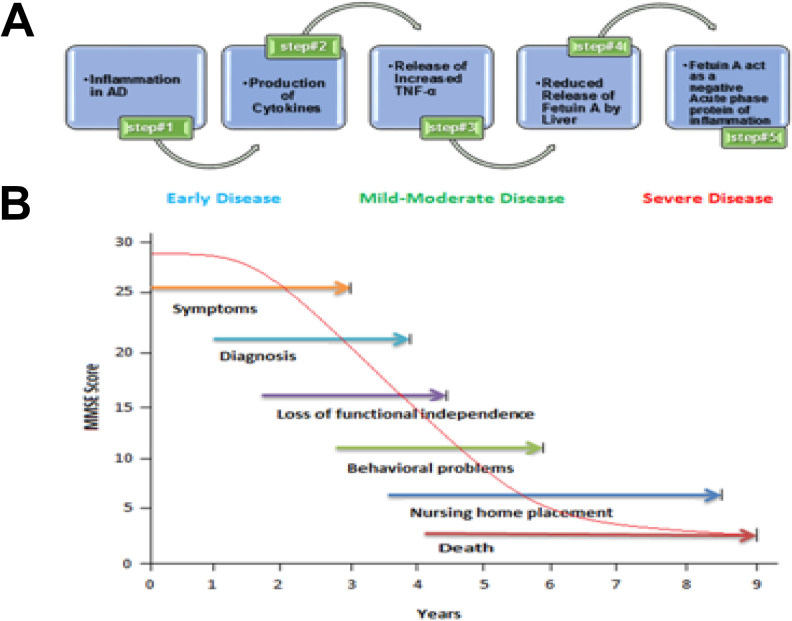Figure 4.
A, Downregulation of apolipoproteins as an indication of AD: Apolipoprotein A-1 when functioning normal prevents aggregation of amyloid β, but lower concentration of apolipoprotein A-1 results in accumulation of amyloid β and thus increased plaque formation results in progression of AD. In this way, change in concentration of Apo A-1 acts as a biomarker of AD. 38 B, Apolipoprotein E facilitated pathways, resulting in AD: Apolipoprotein E by affecting amyloid β pathology mainly affects the pathogenesis of AD. Neuroinflammation is triggered by the accumulation of amyloid β in parenchymal plaques. Moreover, apolipoprotein E may have direct influence on neuroinflammation, metabolism, cerebral vascular integrity, synaptic plasticity as well as transcription using amyloid β–independent mechanisms. The pathways may be differently affected depending on the stage, isoform, and ApoElipidation level. 45 AD indicates Alzheimer’s disease.

